When Glenbow reopens in its revitalized home, the JR Shaw Centre for Arts & Culture, visitors will experience compelling new displays co-created with members of Calgary’s Indonesian, Ethiopian, and Mexican communities. These collaborative displays highlight the diversity of collections in Glenbow’s care and reflect the museum’s commitment to telling meaningful, community-driven stories. Each community worked closely with Glenbow’s team to select art, objects, and belongings that represent and celebrate their cultural heritage.
Indonesian community members Ratna Wynne, Cindy Halim, Arys Wijaya, Shiraz Rashid, and David Wynne came together to select items ranging from traditional textiles to shadow puppets to musical instruments and more. In celebration of Asian Heritage Month, Ratna and Cindy recently visited Glenbow’s collections to reflect on the curatorial process and share what the future display means to the Indonesian community in Calgary.
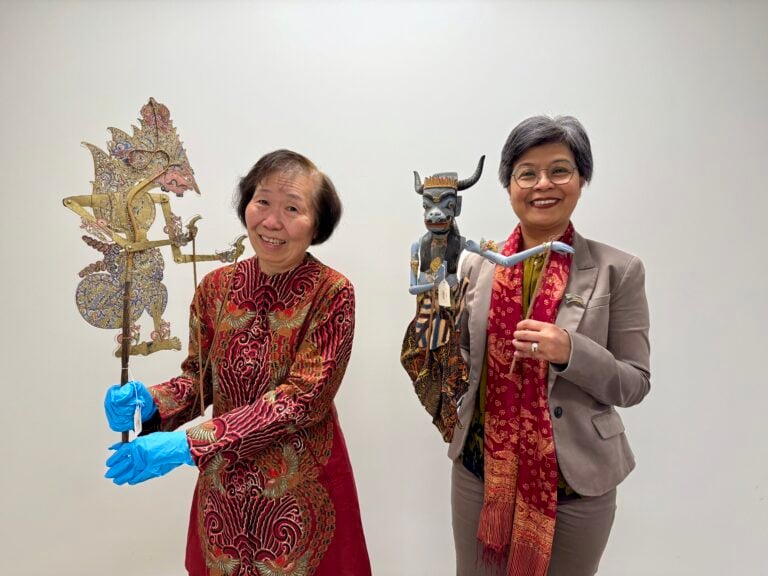
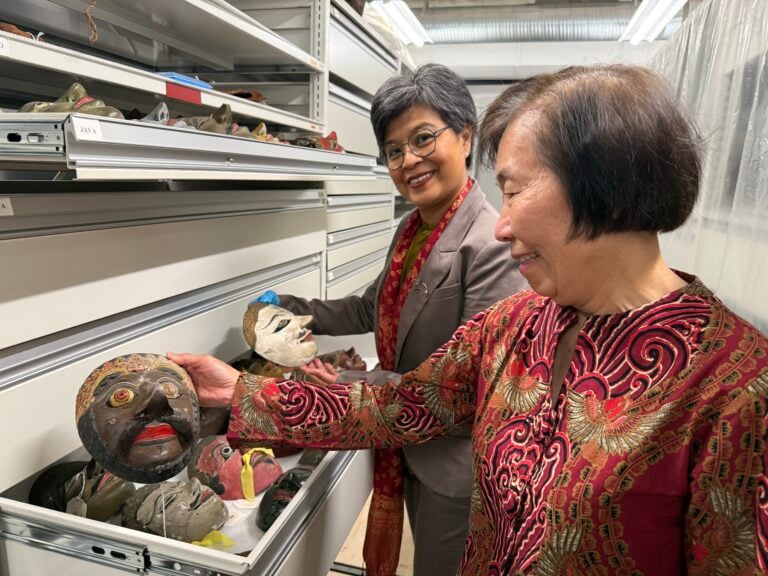
Welcome, Ratna and Cindy! Tell us a bit about yourselves and your role in organizing the Indonesian community display.
Ratna: My name is Ratna Wynne, and I am a volunteer from the Indonesian community in Calgary. The Canadian Indonesian Social Club (CISC) selected me as team leader for this project, working alongside four dedicated members. Together, we collaborated with Glenbow to curate items that best represent Indonesia’s multicultural heritage, ensuring each piece tells a meaningful story.
The Indonesian community in Calgary, through the CISC, is deeply honoured and grateful that Glenbow has chosen Indonesia to be part of this significant exhibition. It is a proud moment for us to showcase Indonesia’s arts, music, and cultural heritage, offering visitors a firsthand experience of our country’s richness and diversity.
Cindy: My name is Cindy Halim, and I’m a member of the CISC. Glenbow contacted us and I thought, “oh, this is perfect”! It really fits with our club. We have a mission, and our mission is to promote culture. I brought it up with the CISC board, and we created a group of people to plan the display. I think it’s so beneficial. It’s really promoting our culture and helping people understand.
How did you decide which items to include in the display?
Ratna: We carefully selected 14 items from Glenbow’s collection, curating pieces that highlight Indonesia’s cultural diversity and artistic excellence. Each item was chosen for its historical significance, artistic value, and deep connection to Indonesia’s traditions. The collection includes traditional masks, shadow puppets, kris [Indonesian daggers], paintings, textiles, handicrafts, and musical instruments – each reflecting Indonesia’s spiritual and artistic identity.
What was the most surprising or challenging part of the process?
Ratna: One of the biggest challenges was narrowing down the selection – Indonesia’s rich culture offers countless stories to tell. The country is the world’s largest archipelago, with over 17,000 islands home to around 1,300 ethnic groups and more than 700 languages. This vast diversity meant that even as curators, we ended up learning so much more about our own heritage through this process.
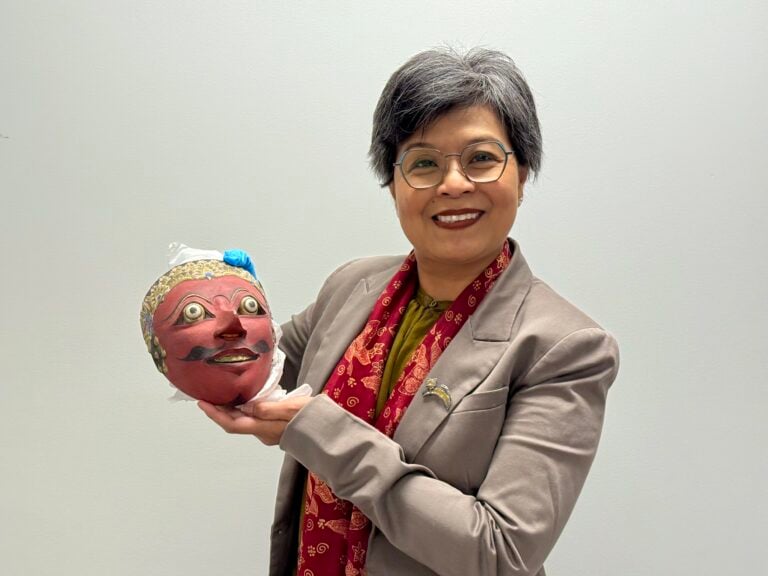
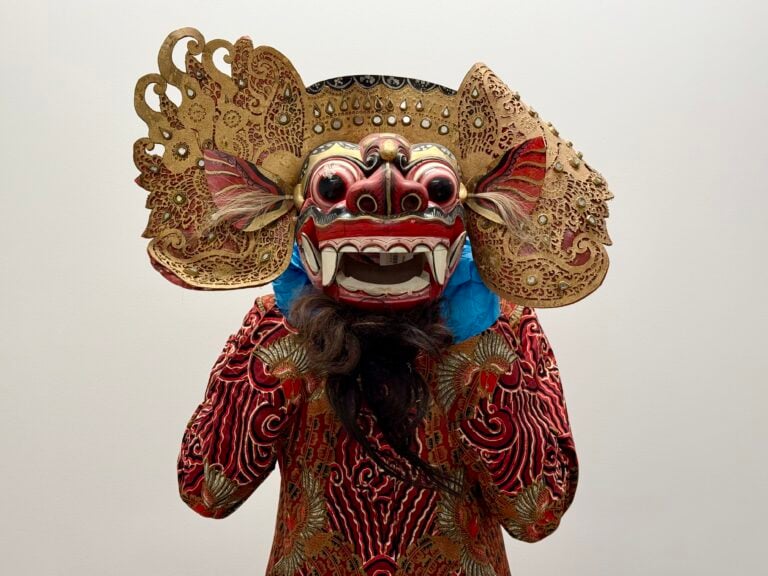
Is there an item or story in the display that holds special meaning for you?
Ratna: Yes, Ulap Doyo [a handwoven Indonesian cloth] holds a very special meaning for me. This remarkable textile represents my deep connection to my roots and fills me with pride. My hometown, Balikpapan, is located in East Kalimantan on the island of Borneo, where Ulap Doyo originates. A traditional fabric made from the natural fibers of doyo plant leaves, Ulap Doyo is a cultural symbol of the Dayak Benuaq community, reflecting their deep connection to nature. It’s renowned for its unique patterns and eco-friendly craftsmanship.
Cindy: I’ve been in Canada 42 years – longer than I was in Indonesia, where I was born. I used to play angklung [a traditional Indonesian percussion instrument made of bamboo] when I was little. I played at church and school, but when I left Indonesia and came here, I forgot all about angklung. Then suddenly, our club decided to have a musical group, and we brought back the angklung. When we decided to play, I thought, “oh yeah, this is nice.” It brings back memories of when I was little. It’s unique, and a lot of people have never seen it in Canada. So that’s why I think it benefits everybody in the community to come here and take a look. It’s going to be amazing.
Why do you think it’s important for community members to co-curate the display with Glenbow?
Ratna: In my opinion, community involvement ensures authenticity as it brings experiences, personal connections, and diverse perspectives that add depth to the display. It’s more than just showcasing artifacts – it’s about sharing real stories from those deeply connected with them, making the exhibition more engaging and meaningful.
What has been the most rewarding part of working on the display so far?
Ratna: Seeing the enthusiasm from both the Indonesian community and Glenbow has been incredibly rewarding. This exhibition strengthens cultural connections, sparks conversations, and shares Indonesia’s beauty with a wider audience. Knowing our efforts will leave a lasting impression makes everything worthwhile.
What do you hope visitors will take away from the display?
Ratna: I hope visitors leave with a newfound appreciation of Indonesian culture – its vibrancy, diversity, and depth. I want them to feel connected to the stories we’ve shared and inspired to explore Indonesia’s unique history, artistry, and multicultural influences. But beyond just exploration, I hope this exhibition sparks a desire for people to visit Indonesia, experience its rich traditions firsthand, immerse themselves in its landscapes, and connect with its people.
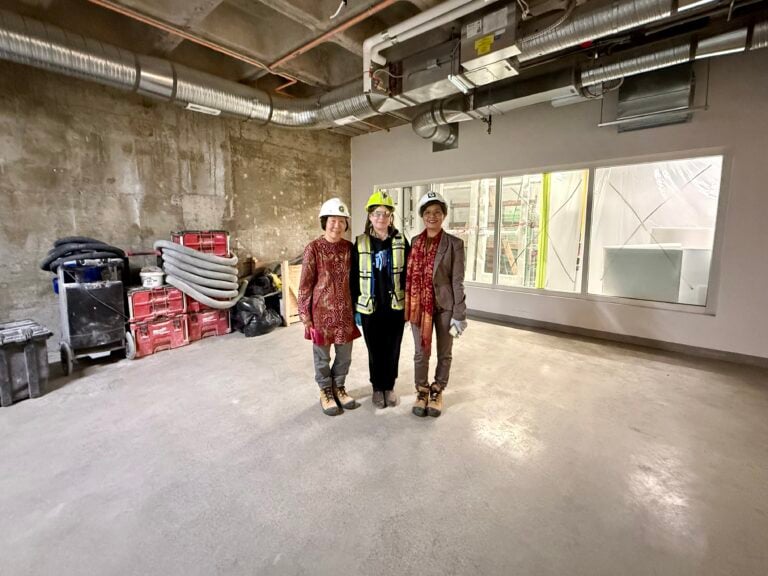
How do you think the display will impact Calgary’s Indonesian community?
Ratna: In my opinion, this exhibition is a powerful celebration of Indonesian heritage, strengthening the community’s presence in Calgary and fostering pride among Indonesians living here. It also builds cultural bridges, encouraging future collaborations to showcase Indonesian traditions in public spaces. Most importantly, it reinforces identity, honouring ancestral traditions while inspiring younger generations to embrace, preserve, and carry forward their cultural roots.
Cindy: Over time, all these cultural arts and crafts can be forgotten. This is really to re-educate people and remind them of what they had in the country they came from. They’re going to be proud of it. This display also benefits children. Children who were born here don’t know much about the arts and crafts where their parents came from, so this is to educate them, to show them what’s good, and to bring their heritage back to Canada.
Thank you, Ratna and Cindy, for joining us!
Glenbow’s co-created community displays are just one example of the museum’s renewed commitment to community. When Glenbow reopens in its revitalized home, the JR Shaw Centre for Arts & Culture, it will be a place where diverse communities are celebrated and shared for generations to come.
